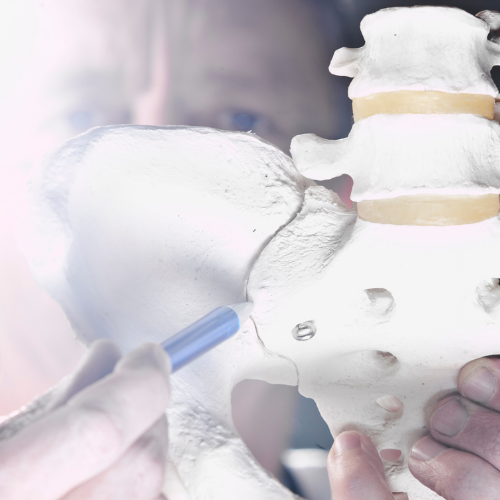
Recently, I was reading a thread on another forum. The comments on that thread led me to believe there are several misconceptions about the SIJ. I thought it would be good to share a synopsis from the perspective of Dynamic Neuromuscular Assessment.
The SIJ is a joint that has minimal movement. Movement is not its job. The job of the SIJ is two fold. First is the SIJ transfers load between the lower extremity and the axial skeleton. The sacrum supports the axial skeleton in the pelvis. The SIJ is the interface between the pelvis and the spine.
Secondly, the SIJ is rich in mechanoreceptors that relay load to the cerebellum. Inturn, the cerebellum responds from those afferent inputs with muscular activation and deactivation. In other words, those afferent inputs have a direct effect on kinetic chain sequencing. The dynamic platform, the integration of the intrinsic, deep longitudinal, and lateral kinetic chains are interdependent with SIJ function.
The SIJ needs to have balanced integration as the structure is loaded during gait and other locomotive movement expressions. There are five muscle groups that need to be evaluated for appropriate nervous system response across their full range of motion…i.e. closed, middle, open position as well as the eccentric action from closed to open. The pelvic floor, the sacral spinalis/multifidus, glute max, piriformis and iliacus are the five muscle groups that act directly on the sacrum and affect the SIJ.
Additionally, we also must evaluate how the femur loads the acetabulum. This includes internal and external rotation of the femur, compression and distraction, lunging and squatting, and shinbox variations. These movements and movement combinations make up the vernacular for leg drive. Leg drive is the primal reflex that we need at birth as we must use leg drive to push out of our mothers uterus and through the birth canal. Infants that have a c-section birth, may be deficient in this reflexive movement. One in four people are delivered by c-section birth (reference here).
Like any presentation, we must map the nervous system response. This starts with the appropriate movement benchmarks, like how the nervous system responds to those benchmarks, and whether it is safe to interact with and provide stimulus to those benchmarks.
When we prioritize the safety of the nervous system, we can provide the appropriate stimulus to the prime driver and its main pair. This creates a huge change in the nervous system and normalizes SIJ response. This is an advanced topic in Dynamic Neuromuscular Assessment because there are several foundational concepts that must be developed so that one can safely interact with the client’s nervous system.
Are you looking for an entry point into better client assessment? Do you want to deep dive into movement and be fully in your body? Then the Movement Mentorship Program that kicks off September 2021 is for you. Learn more and register here.